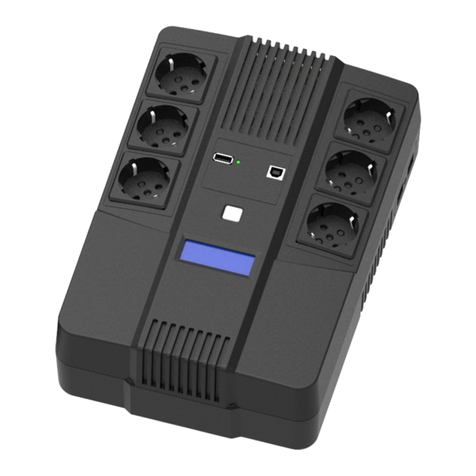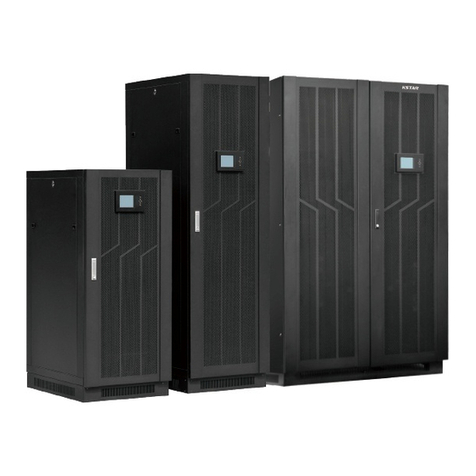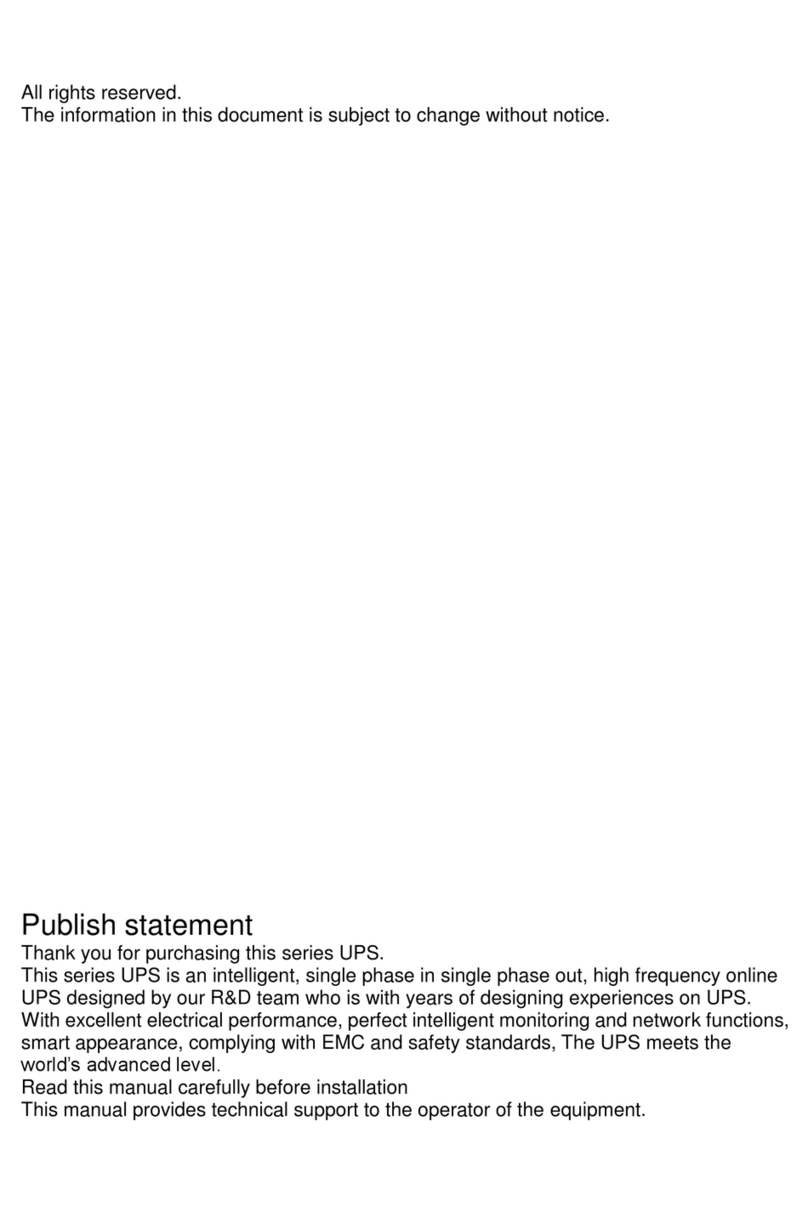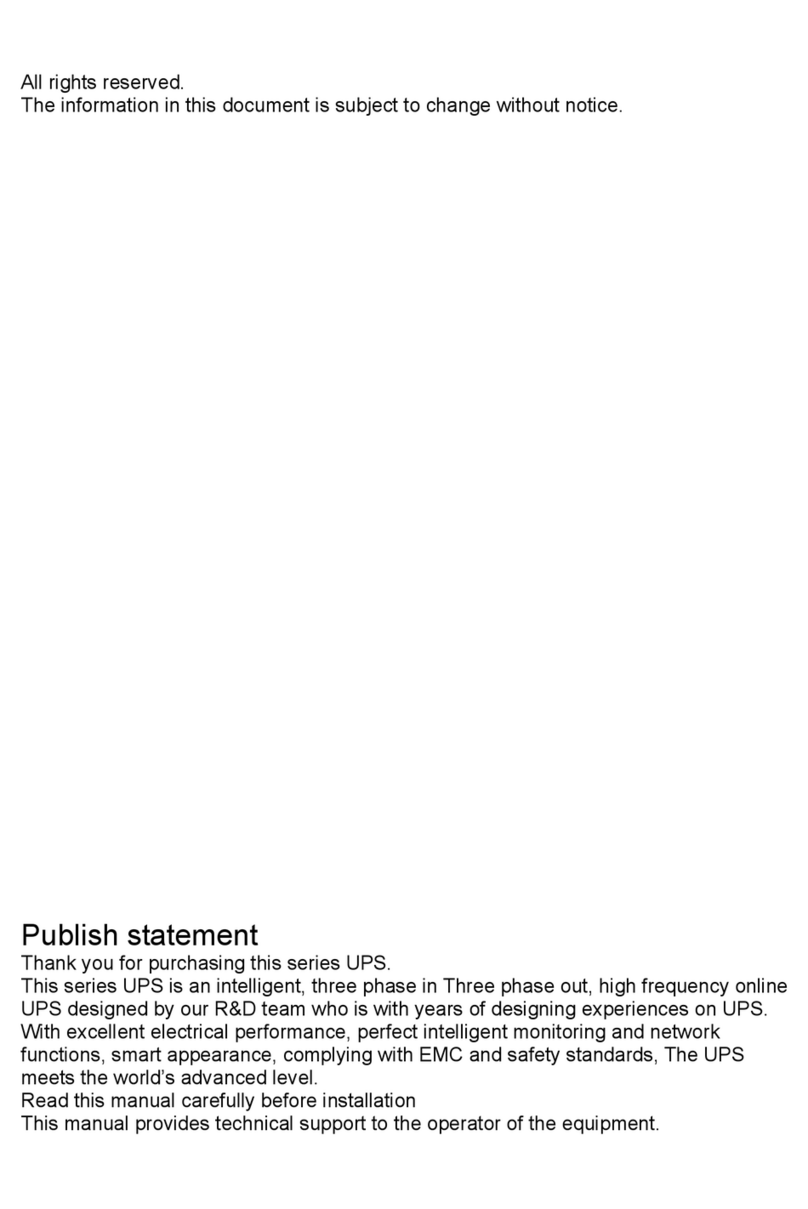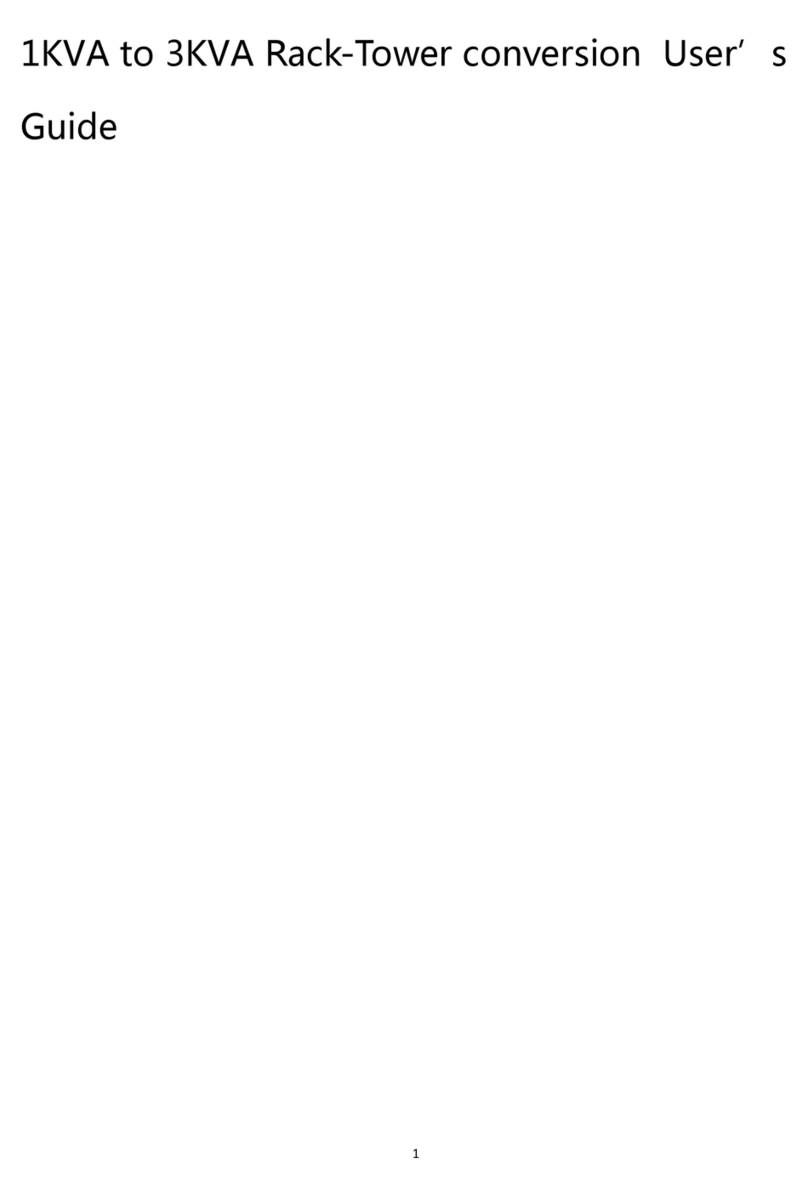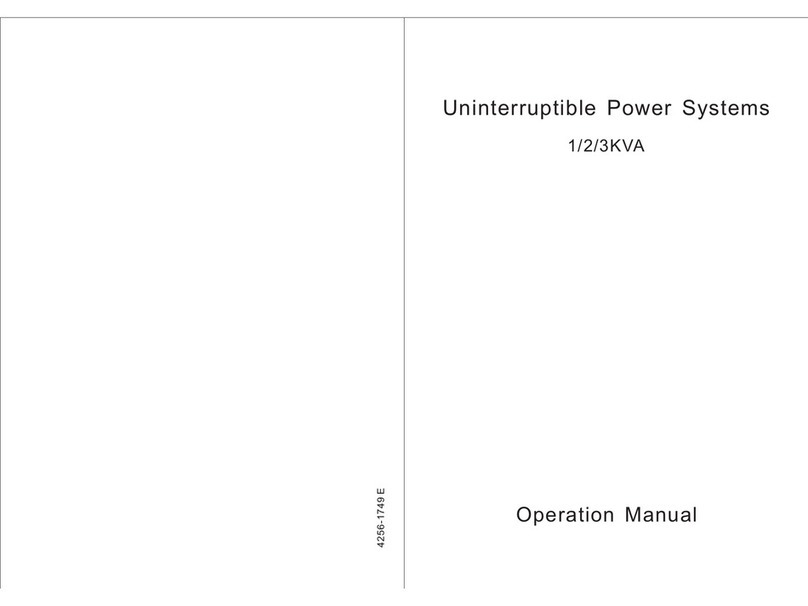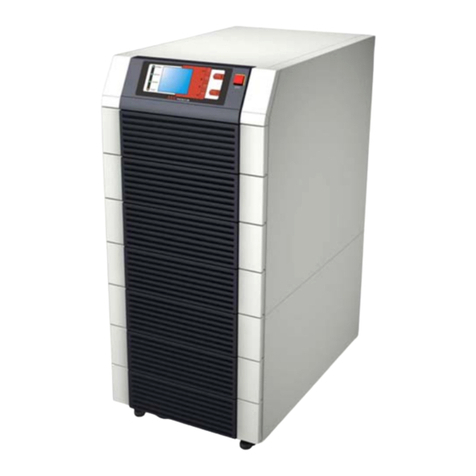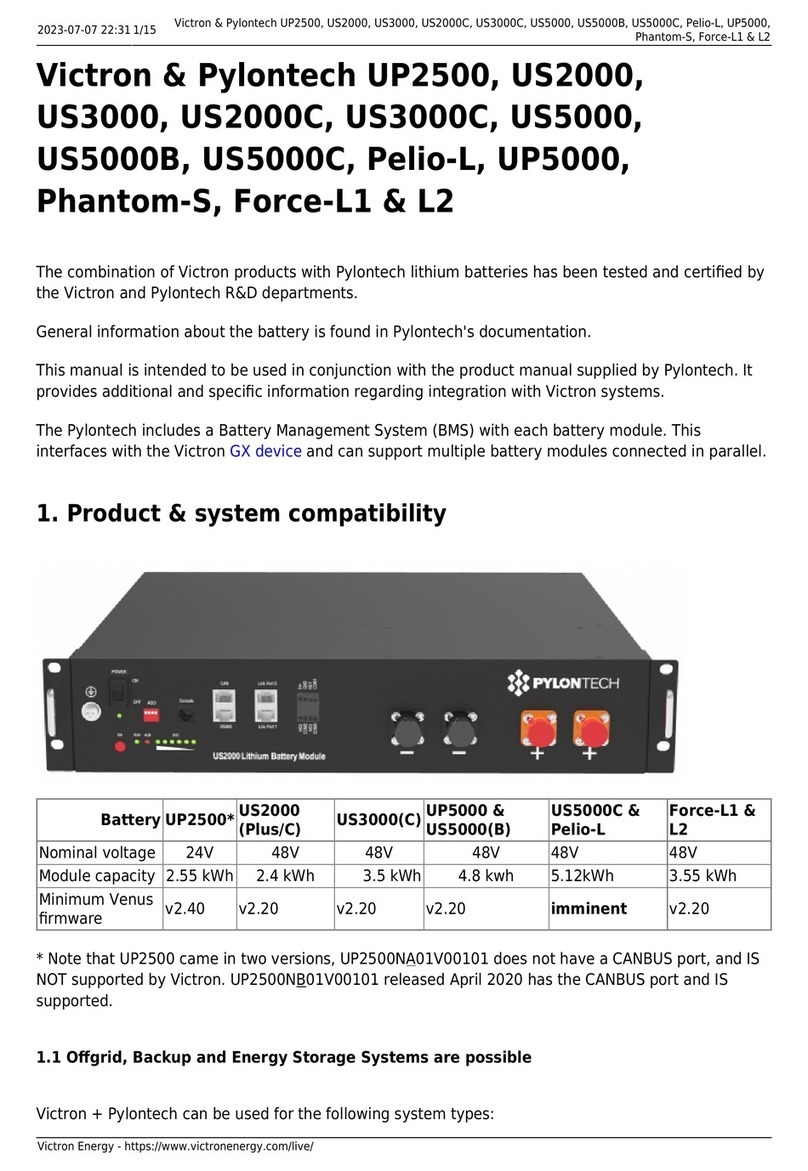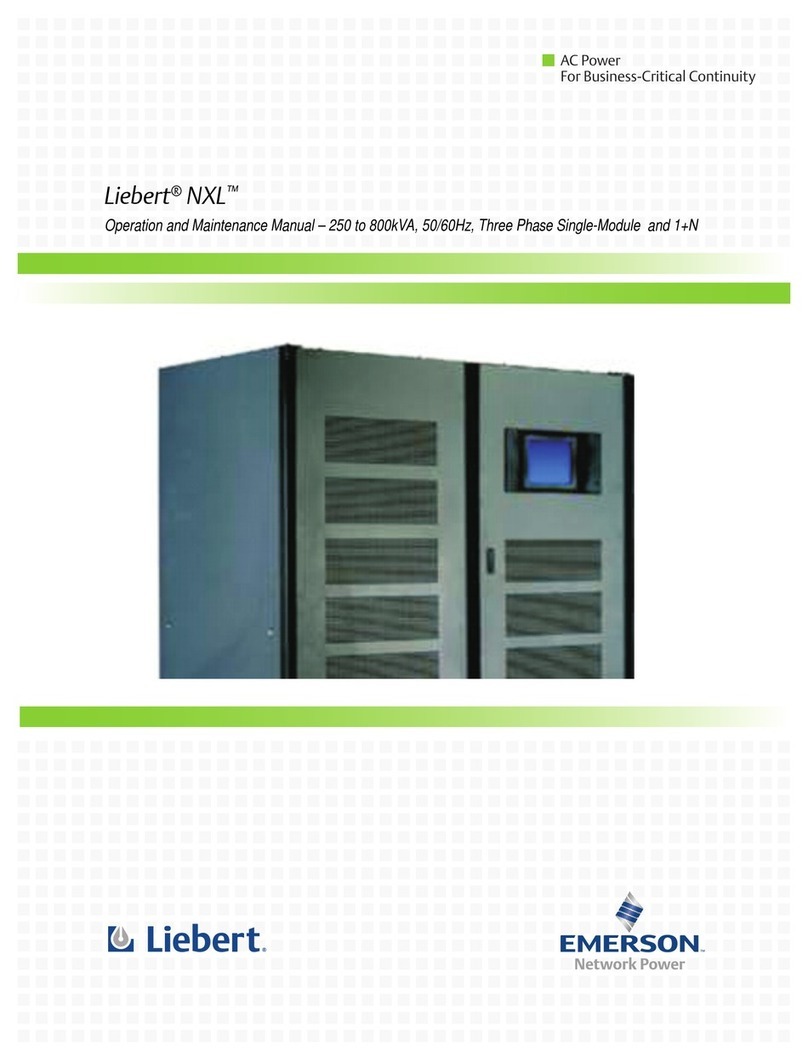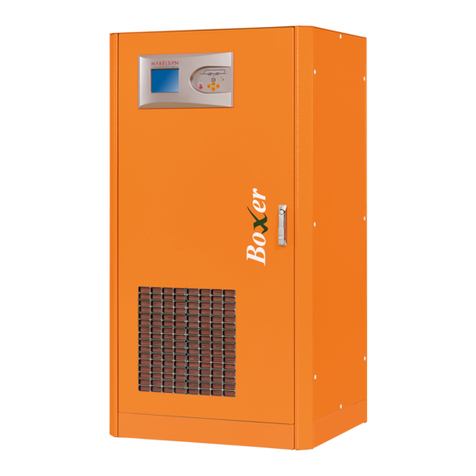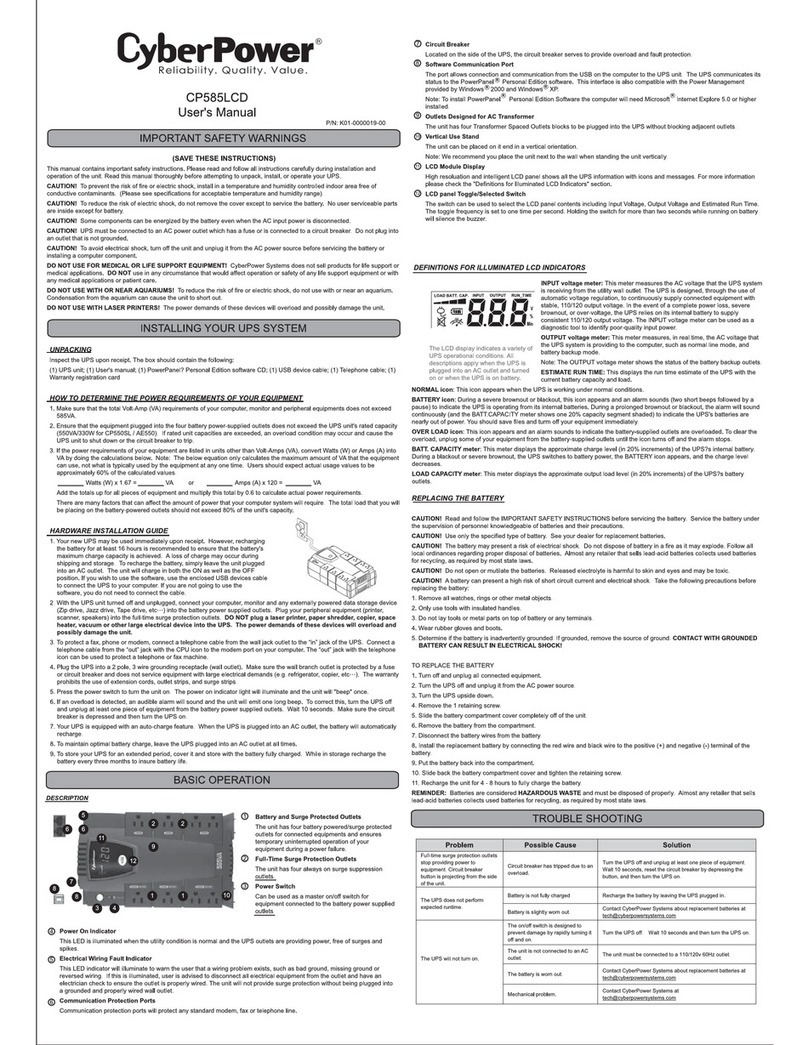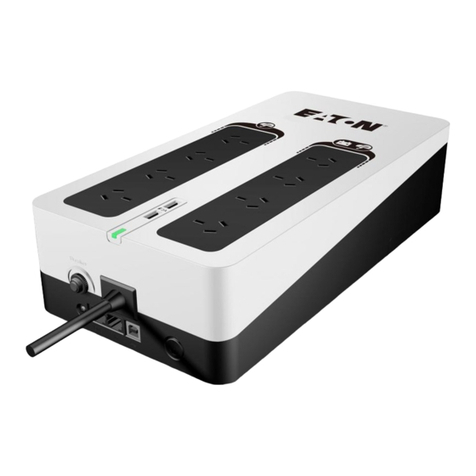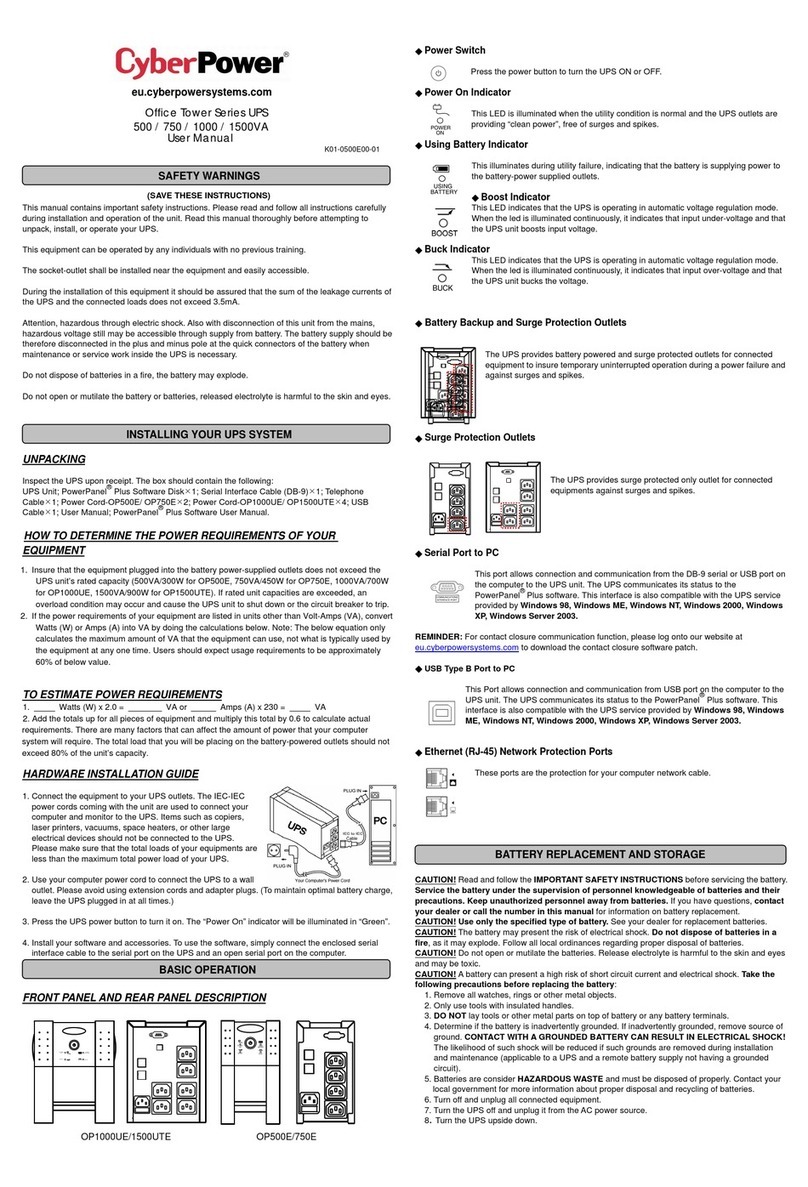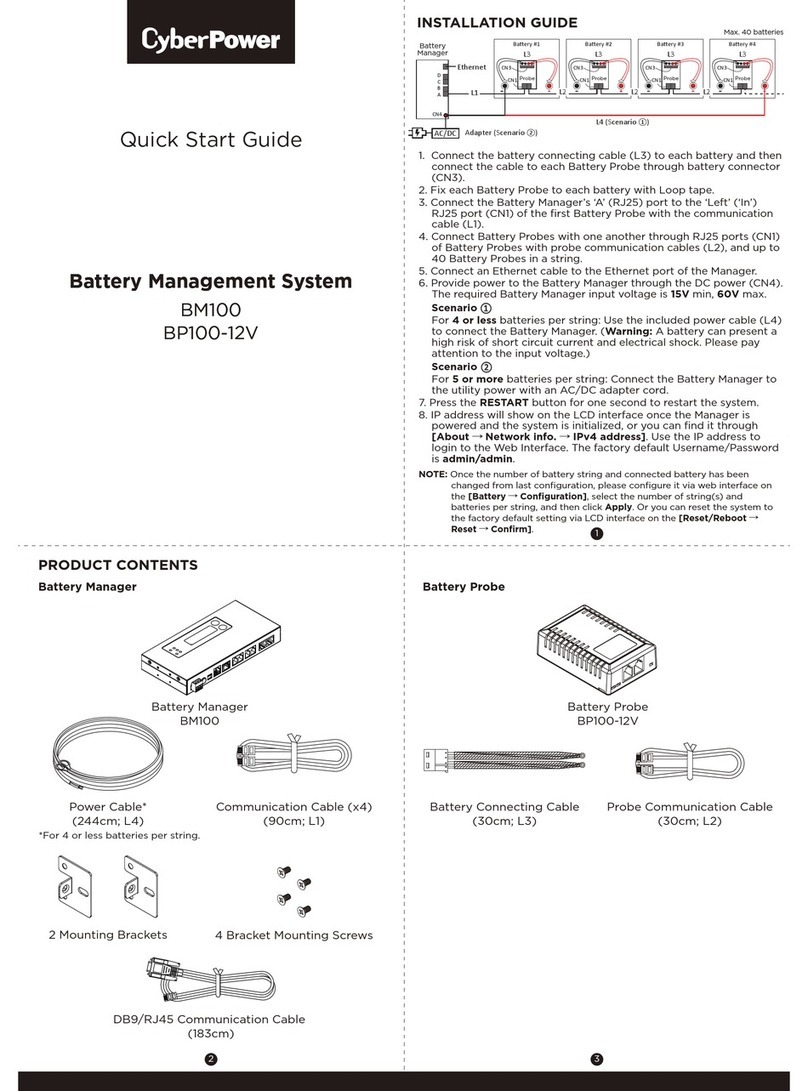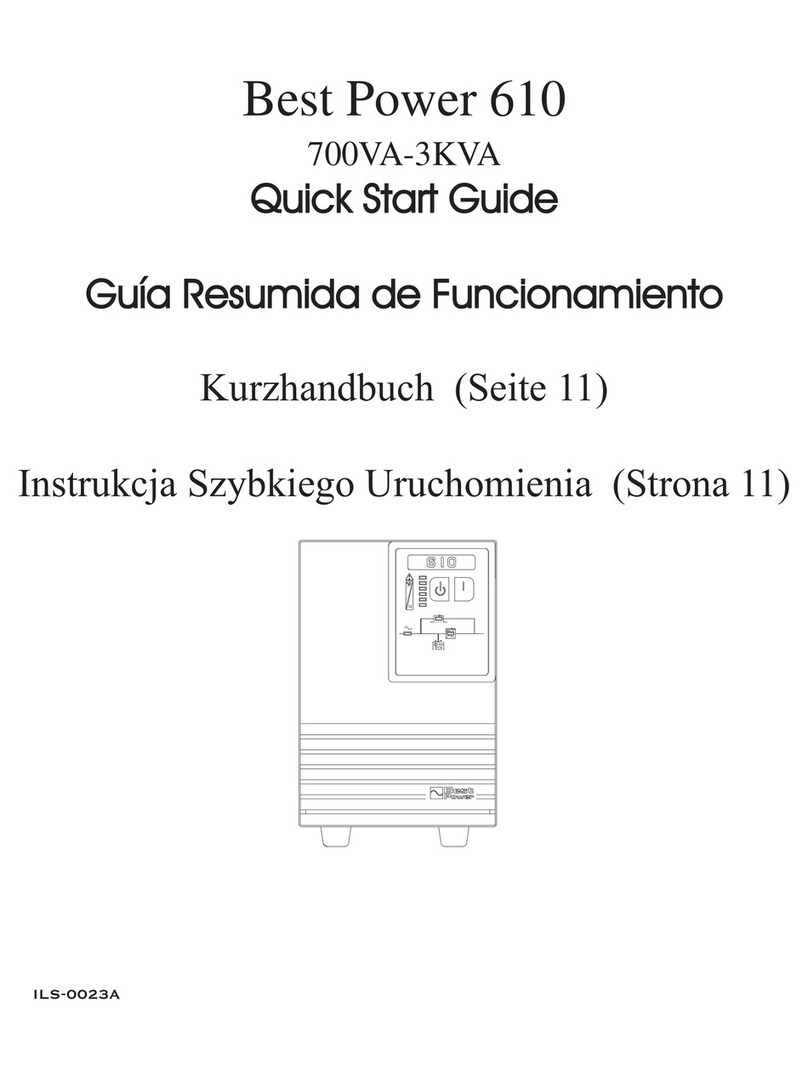‐3‐
1. ImportantSafetyWarning
Please comply with all warnings and operating instructions in this manual strictly. Save this
manual properly and read carefully the following instructions before installing the unit. Do not
operate this unit before reading through all safety information and operating instructions carefully
1-1. Transportation
• Please transport the UPS system only in the original package to protect against shock and
impact.
1-2. Preparation
• Condensation may occur if the UPS system is moved directly from cold to warm environment.
The UPS system must be absolutely dry before being installed. Please allow at least two
hours for the UPS system to acclimate the environment.
• Do not install the UPS system near water or in moist environments.
• Do not install the UPS system where it would be exposed to direct sunlight or near heater.
• Do not block ventilation holes in the UPS housing.
• Please use only VDE-tested, CE-marked power cables to connect the loads to the UPS
system.
1-3. Installation
• Do not connect appliances or devices which would overload the UPS system (e.g. laser
printers) to the UPS output sockets.
• Place cables in such a way that no one can step on or trip over them.
• Do not connect domestic appliances such as hair dryers to UPS output sockets.
• The UPS can be operated by any individuals with no previous experience.
• Connect the UPS system only to an earthed shockproof outlet which must be easily
accessible and close to the UPS system.
• Please use only VDE-tested, CE-marked mains cable (e.g. the mains cable of your computer)
to connect the UPS system to the building wiring outlet (shockproof outlet).
1-4. Operation
• Do not disconnect the mains cable on the UPS system or the building wiring outlet
(shockproof socket outlet) during operations since this would cancel the protective earthing
of the UPS system and of all connected loads.
• The UPS system features its own, internal current source (batteries). The UPS output
sockets or output terminals block may be electrically live even if the UPS system is not
connected to the building wiring outlet.
• In order to fully disconnect the UPS system, first press the OFF button to disconnect the
mains.
• Prevent no fluids or other foreign objects from inside of the UPS system.
1-5. Maintenance, Service And Faults
• The UPS system operates with hazardous voltages. Repairs may be carried out only by
qualified maintenance personnel.
• Caution - risk of electric shock. Even after the unit is disconnected from the mains (building


